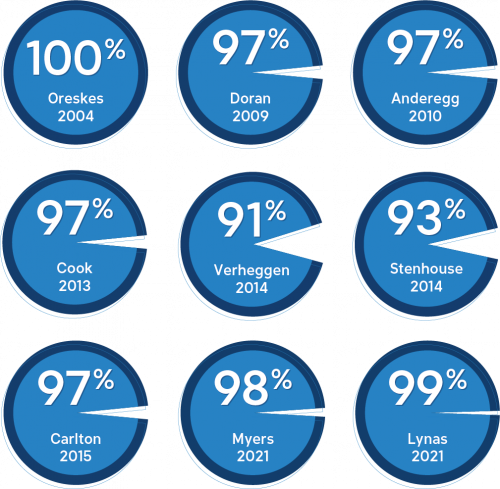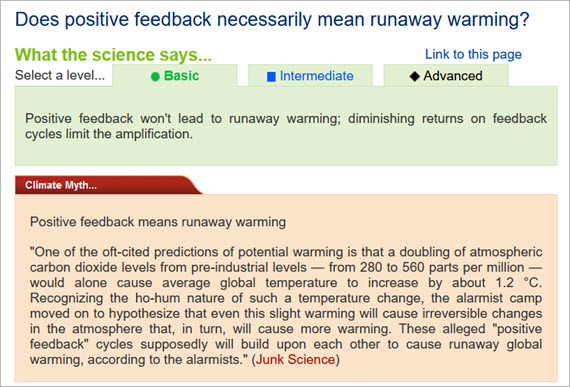In an empty wind-swept field in Richmond, California, next to the county landfill, a company called RavenSr has plotted out land and won permits to build a factory to convert landfill waste to transportation-grade hydrogen for powering vehicles. Six miles away, Moxion Power has laid the concrete foundation for a factory to make energy storage batteries for freight trucks and mobile uses.
RavenSR and Moxion Power are among more than 300 companies across the U.S. launching clean energy manufacturing projects with the help of tax incentives from the Inflation Reduction Act. Meanwhile, consumers have used the law’s tax credits to purchase 1.46 million climate-friendly electric, plug-in hybrid, or fuel cell cars.
The most far-reaching climate law in history, the Inflation Reduction Act is catalyzing a transition in the U.S. economy toward cleaner energy and cleaner transportation — a shift the International Energy Agency, the U.N. Intergovernmental Panel on Climate Change, and others say must happen for the world to reduce emissions of heat-trapping gases to the levels scientists say would avert the most catastrophic and irreversible climate chaos.
Those safeguard levels are a 50% reduction in emissions by 2030 from 2010 levels and net zero emissions by 2050 to limit global average temperature rise to well below 2 degrees Celsius — a target that 195 countries agreed to in the 2015 Paris Agreement.
The Biden administration’s Department of Energy estimates that the Inflation Reduction Act along with the Bipartisan Infrastructure Law will drive down U.S. emissions by 40% from 2005 levels by 2030, a conclusion also reached in an independent study in Science.
Combined with new Environmental Protection Agency rules restricting tailpipe emissions from future trucks and cars, limiting power plant emissions, and requiring capping of methane leaks from oil and gas exploration, as well as state and private sector action, the U.S. is on track to reduce emissions 50% by 2030, the Department of Energy forecasts.
But what happens if these climate laws are gutted or reversed?
2030 is less than six years away. What happens in the next four of them will affect our chances of avoiding the worst climate chaos, experts say.
That’s why 2024 is a climate election.
“Why this election is so important and why it is a climate election is because we are out of time,” said Lori Lodes, executive director and co-founder of Climate Power, a nonprofit working on protecting climate policy, speaking to reporters recently.
2024 SkS Weekly Climate Change & Global Warming News Roundup #24
Posted on 16 June 2024 by BaerbelW, Doug Bostrom, John Hartz
Story of the week
A glance at this week's inventory of what experts tell us is extreme weather mayhem juiced by climate change points us in the general direction of our Story of the Week. Writing for Carbon Brief, climate researcher Zeke Hausfather puts our historically unprecedented globally high surface temperature into the larger picture of human-caused climate change, in his analysis What record global heat means for breaching the 1.5C warming limit. 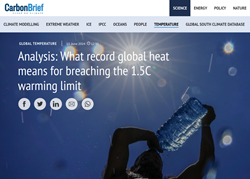
Have we "reached 1.5C" with no looking back? Depending on data sets we've now flirted with or even kissed this temperature— but we're not yet living with it full time. Hausfather explains why we're not there yet. As part of that he delves into the rather tricky business of identifying exactly when we'll unequivocally crashed through this iconic number. The answer is "it depends," but regardless of measurement methods and reasoning we will definitely arrive at this destination.
1.5C in the rear view mirror: soon, or later? That's partly a matter of perspective. Dr. Hausfather is quite a bit younger than anybody working on our weekly news roundup, so we can't help but chuckle a little at this conclusion:
The findings show that, while the best estimate for crossing 1.5C has moved up by approximately two years compared to Carbon Brief’s earlier 2020 analysis, it remains most likely to happen in the late 2020s or early 2030s – rather than in the next few years.
For us ancients for whom 2015 seems a mere blink of the eye ago, "the next few years" definitely includes the early 2030s. From our viewpoint we're practically already there. In any case, regardless of the subjective nature of time we're running out of calendar pages to deal with our problem.
Stories we promoted this week, by publication date:
Before June 9
- Skeptical Science New Research for Week #23 2024, Skeptical Science, Marc Kodack & Doug Bostrom. Skeptical Science's own weekly compendium of climate research.
- Threatened by rising seas, the first of Panama’s Indigenous islanders are forced to leave, Climate, CNN, Photographs by Edu Ponces & Berta Vicente/RUIDO Photo, Story by Rachel Ramirez & Edu Ponces.
- 8 Young Alaskans Reignite a Court Fight Over Climate Change, Alaska Public Media, Kavitha George.
- As nuclear power flails in the U.S., White House bets big on a revival, Business, Washington Post, Evan Halper. "Price shock, engineering mishaps, long delays and a spate of corruption have not deterred the White House from its nuclear energy ambitions."
- Announcing the World Ocean Day 2024 Action Theme, World Ocean Day, Staff. "We currently face one o" the greatest threats ever to our blue planet and all its inhabitants: the climate crisis. It is all too clear that we need a healthy ocean for a healthy climate, and vice versa, and we need significantly stronger local, national, and international action from both government and corporate leaders. Now. "
- “Time Capsule” Rocks Uncover the Early History of the Earth and the Ocean, Ocean, Smithsonian, Naomi Greenberg. "Zircons that formed 4 billion years ago may hold clues as to what the Earth looked like in its early history and how it went from a fiery ball of lava to the planet we know today. "
- UK general election: Watch out for climate obstructionism, Climate Home News, Freddie Daley & Peter Newell. "Climate sceptic groups and their right-wing media allies have shifted from disputing science to exaggerating the economic costs of climate action and downplaying the benefits"
- Q&A: As Temperatures in Pakistan Top 120 Degrees, There’s Nowhere to Run, Justice & Health, Inside Climate News, Interview by Steve Curwood,. "An environmental lawyer’s frightening report from on the ground in Lahore: animals crumpling, waters rising, crops collapsing, an economy on the brink and millions displaced with nowhere safe to go."
- Climate Misinformation Is Rampant. AI May Be Able to Stop It, E&E News/Scientific American, Francisco "A.J." Camacho & Scott Waldman. "Researchers want to create an AI system that can quickly detect and debunk false or misleading claims about climate change"
- Bonn makes only lukewarm progress to tackle a red-hot climate crisis, Comment, Climate Home News, Partha Hefaz Shaikh. "Comment: At mid-year UN talks, negotiators have achieved little to get more help to those struggling with fiercer floods, cyclones and heatwaves in South Asia"
Fact Brief - Is ocean acidification from human activities enough to impact marine ecosystems?
Posted on 15 June 2024 by SkS-Team
![]() Skeptical Science is partnering with Gigafact to produce fact briefs — bite-sized fact checks of trending claims. This fact brief was written by Sue Bin Park in collaboration with members from the Skeptical Science team. You can submit claims you think need checking via the tipline.
Skeptical Science is partnering with Gigafact to produce fact briefs — bite-sized fact checks of trending claims. This fact brief was written by Sue Bin Park in collaboration with members from the Skeptical Science team. You can submit claims you think need checking via the tipline.
Is ocean acidification from human activities enough to impact marine ecosystems?
 Carbon dioxide emissions from human activities are acidifying oceans, disrupting marine ecosystems by dissolving the shells and skeletons of certain organisms.
Carbon dioxide emissions from human activities are acidifying oceans, disrupting marine ecosystems by dissolving the shells and skeletons of certain organisms.
The ocean absorbs at least 25% of the CO2 released in the atmosphere. CO2 reacts with ocean water (H2O) to form carbonic acid (H2CO3), which releases acidifying hydrogen ions (H+).
Ocean acidification is when the pH level of ocean water decreases due to an increase in hydrogen ions.
Hydrogen ions bind to carbonate, making it more difficult for plankton, coral, and other organisms to build their calcium carbonate shells and skeletons.
Because these organisms serve as food and habitat for other marine life, their decline threatens ocean food chains, and by extension human populations that depend on fisheries.
Since humans began burning fossil fuels around 200 years ago, the oceans have become 30% more acidic — a more rapid change than at any time in the last 50 million years.
Go to full rebuttal on Skeptical Science or to the fact brief on Gigafact
This fact brief is responsive to conversations such as this one.
Sources
Encyclopædia Britannica PH | Definition, Uses, & Facts
National Oceanic and Atmospheric Administration What is Ocean Acidification?
European Environment Agency Ocean acidification
Of red flags and warning signs in comments on social media
Posted on 14 June 2024 by BaerbelW
Somewhat surprisingly for what is regarded as a network of professionals, climate science misinformation is getting shared on LinkedIn, joining other channels where this is happening. Several of our recent posts published on LinkedIn have attracted the ire of various commenters who apparently are in denial about human-caused climate change. Based on their and other such comments, we compiled a list of telltale signs to be on the lookout for when reading posts or comments related to human-caused climate change or global warming on LinkedIn, other social media channels and even our own comment section. We hope you find this list helpful as the pointers can serve as warning flags to take a closer look before deciding whether to ignore or accept what has been written.
- The scientific consensus on human-caused global warming is questioned or even attacked outright, even though the basic statements that global warming is real and is mostly caused by humans due to the continued burning of fossil fuels can be called a settled fact - the facts are at least more than settled enough to base our decisions on. Legit discussions can obviously happen about what we should do. For more, please read our explainer about a scientific consensus.
Several studies have shown - depending on what you look at - that the level of agreement in the scientific literature and amongst climate scientist about the major points ranges from 91-100% - usually in the high 90s.When reading comments that provide references, readers should keep in mind that finding references from the 1-3% while ignoring the other 97-99% is a prime example of "cherry picking".
- Reactions via the „laugh“ icon on serious topics like human-caused climate change could either have happened accidentally (unlikely) or be a sign that the commenter doesn‘t quite (want to) grasp or accept scientific findings on the topic (quite likely).
- Comments making claims which seem to contradict our large list of rebuttals will in most likelihood be wrong or misleading or will not rely on scientific research published in high-quality peer-reviewed journals. If in doubt, please head over to sks.to/arguments and check for yourself.
- Comments rattling off many long-debunked myths - i.e. gish-gallops - have the sole aim to waste everybody's time and confuse people. They are best ignored.
Skeptical Science New Research for Week #24 2024
Posted on 13 June 2024 by Doug Bostrom, Marc Kodack
Open access notables
Wildfire smoke impacts lake ecosystems, Farruggia et al., Global Change Biology:
We introduce the concept of the lake smoke-day, or the number of days any given lake is exposed to smoke in any given fire season, and quantify the total lake smoke-day exposure in North America from 2019 to 2021. Because smoke can be transported at continental to intercontinental scales, even regions that may not typically experience direct burning of landscapes by wildfire are at risk of smoke exposure. We found that 99.3% of North America was covered by smoke, affecting a total of 1,333,687 lakes ≥10 ha. An incredible 98.9% of lakes experienced at least 10 smoke-days a year, with 89.6% of lakes receiving over 30 lake smoke-days, and lakes in some regions experiencing up to 4 months of cumulative smoke-days. Herein we review the mechanisms through which smoke and ash can affect lakes by altering the amount and spectral composition of incoming solar radiation and depositing carbon, nutrients, or toxic compounds that could alter chemical conditions and impact biota.
From Denial to the Culture Wars: A Study of Climate Misinformation on YouTube, de Nadal, Environmental Communication:
Climate change is becoming a new front in the culture wars, with YouTube as one of its key arenas. Centered on an “Alternative Influence Network” orbiting Spain’s right-wing populist party Vox, this article examines the underexplored role of YouTube political influencers in propagating climate misinformation. Using thematic analysis, it uncovers instances of “post-denial” narratives that accept the reality of climate change while targeting climate policy and the climate movement, often through conspiracy theories and misogynistic rhetoric. Disagreements extend beyond policy specifics, intertwining with ongoing culture wars against a “woke wave” encompassing feminism, anti-racism, and now environmentalism. Amidst escalating opposition to Net Zero policies, the study sheds light on how these climate narratives reinforce “us” vs “them” binaries and appeal to feelings of resentment among young white males disoriented by rapid cultural change, who increasingly turn to YouTube for news and community.
Climate changes and food-borne pathogens: the impact on human health and mitigation strategy, Awad et al., Climatic Change:
The impact of climate change on food-borne pathogens is multifaceted and includes changes in the environment, agriculture, and human behavior. This review article examines the effect of climate change on food-borne pathogens, explores the connection between climate change and food-borne illness, records the current evidence on the effects of climate change on food-borne pathogens and potential consequences for human health, highlights knowledge gaps and areas for further research, and summarizes the strategies for mitigation and adaptation.
Uncertain Pathways to a Future Safe Climate, Sherwood et al., Earth's Future:
Global climate change is often thought of as a steady and approximately predictable physical response to increasing forcings, which then requires commensurate adaptation. But adaptation has practical, cultural and biological limits, and climate change may pose unanticipated global hazards, sudden changes or other surprises–as may societal adaptation and mitigation responses. These poorly known factors could substantially affect the urgency of mitigation as well as adaptation decisions. We outline a strategy for better accommodating these challenges by making climate science more integrative, in order to identify and quantify known and novel physical risks including those arising from interactions with ecosystems and society. We need to do this even–or especially–when they are highly uncertain, and to explore risks and opportunities associated with mitigation and adaptation responses by engaging across disciplines. We argue that upcoming climate assessments need to be more risk-aware, and suggest ways of achieving this.
From this week's government and NGO section:
Navigating the Transition to Net-zero Emissions in Southeast Asia – Energy Security, the Role of Gaseous Energy Carriers and Renewables-based Electrification, Fekete et al., German Federal Ministry for Economic Affairs and Climate Action:
The authors emphasize that rapid expansion of renewable electricity and electrification of energy end users is essential, not only to achieve climate mitigation targets but also to boost energy security and economic development across Southeast Asia. Focusing on Indonesia, Thailand, Viet Nam, and the Philippines the authors analyze net-zero pathways under two different decarbonization scenarios – one centered on reducing fossil fuel use through the deep electrification of energy demand, and the other achieving these reductions through the use of renewable gases such as hydrogen.
The Incredible Inefficiency of the Fossil Energy System, Walter et al., RMI:
Today’s fossil energy system is incredibly inefficient: almost two-thirds of all primary energy is wasted in energy production, transportation, and use, before fossil fuel has done any work or produced any benefit. That means over $4.6 trillion per year, almost 5% of global GDP and 40% of what we spend on energy, goes up in smoke due to fossil inefficiency. Literally. The winds are changing, though, as fossil technologies are undercut by more efficient alternatives. End-use efficiency is driving out fossil fuels, reinforced by three new tailwinds that upend the energy landscape: renewable electricity, localization, and electrification. These drivers will allow us to drastically cut down on energy waste and phase out fossil fuels.
140 articles in 59 journals by 851 contributing authors
Physical science of climate change, effects
Changes in Compound Hot Extremes over the Mid–High Latitudes of Asia and the Underlying Mechanisms, Jiang et al., Journal of Climate 10.1175/jcli-d-23-0502.1
Observations of climate change, effects
Air–sea heat fluxes variations in the Southern Atlantic Ocean: Present-day and future climate scenarios, Moura et al., International Journal of Climatology 10.1002/joc.8517
Analysis of tropical nights in Spain (1970–2023): Minimum temperatures as an indicator of climate change, Correa et al., International Journal of Climatology Open Access pdf 10.1002/joc.8510
Disastrous effects of climate change on High Mountain Asia, Cui et al., Advances in Climate Change Research Open Access 10.1016/j.accre.2024.06.004
Fossil fuels are shredding our democracy
Posted on 12 June 2024 by Guest Author
This is a re-post of an article from the Climate Brink by Andrew Dessler published on June 3, 2024.
I have an oped in the New York Times (gift link) about this. For a long time, a common refrain about the energy transition was that renewable energy needed to become cheaper before it could replace fossil fuels. That milestone has now been reached, with solar and wind power often costing less than oil, gas, and coal.
This is especially true if you add in the external costs of fossil fuels, such as the costs of air pollution that kills millions of people each year and the costs of fossil fuels contributing to geopolitical instability.
However, instead of the market naturally transitioning to these cheaper and cleaner energy sources, fossil fuel companies are leveraging their enormous political influence to hinder this shift. They employ tactics such as lobbying, spreading disinformation, and funding politicians who support fossil fuels, all in an effort to maintain their dominance and profits in the energy market.
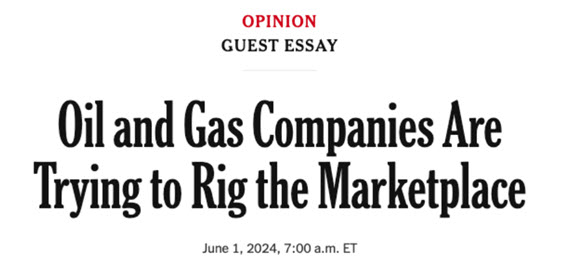
My NYT piece focused on disinformation, but this is just a small piece of the picture — there is a lot more going on than I could fit into a 1,000-word op-ed.
At a glance - Does positive feedback necessarily mean runaway warming?
Posted on 11 June 2024 by John Mason, BaerbelW, Ken Rice
On February 14, 2023 we announced our Rebuttal Update Project. This included an ask for feedback about the added "At a glance" section in the updated basic rebuttal versions. This weekly blog post series highlights this new section of one of the updated basic rebuttal versions and serves as a "bump" for our ask. This week features "Does positive feedback necessarily mean runaway warming?". More will follow in the upcoming weeks. Please follow the Further Reading link at the bottom to read the full rebuttal and to join the discussion in the comment thread there.
At a glance
Yet another climate change myth that has not aged well. As of early May 2024, all of the past 12 months had come in at more than 1.5°C above pre-industrial temperatures, so all of the first sentence is now tripe.
However, with regard to the rest of the myth, the evidence suggests it is extremely unlikely that Earth can enter a runaway greenhouse state.
Why is that? We have two good lines of evidence to support the contention. Firstly, we know an awful lot these days about the geography and climate of Earth in the past. Ancient geography can be determined by examining rock sequences on the continents and noting similarities in their fossil faunas, sedimentary environments and ancient magnetism.
So we know, for example, that around 55.8 million years ago, Ellesmere Island, off the NW coast of Greenland, was a lot warmer than it is today. The main geographical difference between then and now was that the Atlantic Ocean was narrower. The faunal difference was a lot more impressive. Where there are now glaciers and polar bears, back then tortoises, snakes and alligators thrived. Their fossils, along with those of redwood, ginkgo, elm and walnut, are to be found in Ellesmere Island's sedimentary rocks.
The time in question is known as the Palaeocene-Eocene Thermal Maximum. As the name suggests, it was probably the hottest climate experienced on Earth in the past 600 million years. To get temperate to subtropical temperatures in the Arctic is indeed impressive. But there was no runaway beyond that. Why?
Trapping of heat by CO2 and other greenhouse gases causes an energy imbalance on Earth. This imbalance gets amplified by positive feedbacks. A positive feedback happens when the planetary response to a change serves to amplify that change. For example, due to burning of fossil fuels, atmospheric CO2 has gone up by 50%. The resulting enhanced greenhouse effect is heating up the planet. The heating, among other things, melts arctic permafrost, releasing the CO2 and methane trapped within it. These gases amplify that initial change. The effect reinforces the cause, which will in turn further increase the effect, which in turn will reinforce the cause… and on and on.
So won't this spin out of control? The answer is almost certainly not. Feedbacks are not just positive. One very important one is that a warmer planet radiates more energy out to space than a cooler one. This feedback is not only negative but it is also strong.
Furthermore, positive feedback cycles will go on and on, but there will be a diminishing of returns, so that after a number of cycles the effects become insignificant. Thus, if we double the atmospheric concentration of CO2, the amount by which the response to that change - heating - can be amplified is approximately three times.
The creator and spreader of this particular myth is essentially putting words in people's mouths. No surprise there. But we do not need a runaway greenhouse effect to make life on Earth difficult. Just a few degrees of additional heating will do exactly that.
Please use this form to provide feedback about this new "At a glance" section. Read a more technical version below or dig deeper via the tabs above!
Click for Further details
Resources for debunking common solar and wind myths
Posted on 10 June 2024 by Guest Author
This is a repost from a Yale Climate Connections article by SueEllen Campbell published on June 3, 2024. The articles listed can help you tell fact from fiction when it comes to solar and wind energy.

Some statements you hear about solar and wind energy are just plain false. Some are a little bit true but so unbalanced, incomplete, and out of context that they might as well be false. And some tap into genuine complexities. When the facts are complicated, nuanced, mutable, or otherwise hard to pin down, statements may mislead (both deliberately and accidentally) by oversimplification.
The links below are primarily about the first two categories, that is, wholly or mostly false statements.
Myths about wind and solar
- “Do wind turbines kill birds? Are solar panels toxic? The truth behind green-energy debates.” Elizabeth Weise, USA Today. A good, brief introduction to a handful of common myths, not just the two in the headline, and a story about how they play out in a community debate.
- “We fact-checked President Trump’s dubious claims on the perils of wind power.” Brad Plumer, New York Times. Excellent overview of myths about whales, cancer, other health issues, property values, and power outages.
- “Wind energy myths.” U.S. National Renewable Energy Laboratory (NREL). Another good overview, including several more complex questions.
2024 SkS Weekly Climate Change & Global Warming News Roundup #23
Posted on 9 June 2024 by BaerbelW, Doug Bostrom, John Hartz
Story of the week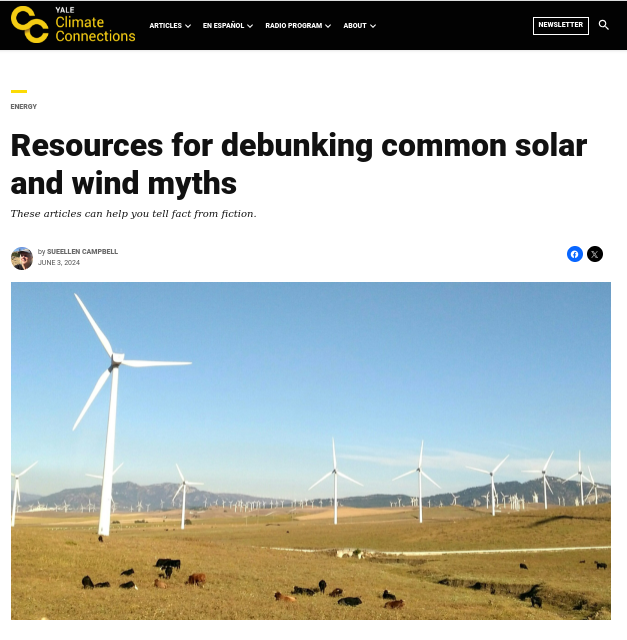
Our Story of the Week is Yale Climate Connection's Resources for debunking common solar and wind myths, by Sueellen Campbell. Without a lot of fuss and bother Campbell's article inventories silly myths about modernized (aka "renewable") energy sources and cuts directly to the chase for each with a ink to clarifying information from reliable sources. Topics covered include:
- Wind turbine noise
- Bird mortality caused by wind turbines
- Whale mortality caused by wind turbines
- Cancer caused by wind turbines
- The environmental footprint of resources for updated energy sources
- Electromagnetic health effects of solar farms
- Solar power as a threat to farmland
- Intermittency of wind and solar power
A few of these have some basis in fact. Others are complete inventions of imagination with no basis in reality whatsoever. All share in common calculated emotional appeal, synthesized in hope of generating public fear, rejection and— the real objective— profitable public policy procrastination.
Our legacy energy system based on fossil fuel has vastly larger negative impacts, yet fossil fuel's continued growth mostly flies beneath the public radar. High profile projects such as Keystone XL may encounter signifcant negative publicity, but for the most part the industry carries on in relative serenity. Regardless of all of the obvious downsides of sticking with this primitive system, the sheer momentum of more than a hundred years of habit lends an eerie sort of inexorability of increased commitment to the identifed folly of our caveman-grade combustion lifestyle.
How may this be? We find some details in Pam Radtke's article published in floodlight, a journal with the self-described mission of "investigating the powers that stall climate action." Is US offshore wind dead in the water — or just poised for the next big gust? certainly does that, describing sophisticated regulatory capture by the fossil fuel industry leading to legally mandated paralysis of energy modernization. This is of course made easier when a public confused by misinformation cannot pass clear messages of preferences to polticians in charge of public policy. The only way out of this impasse is to be less confused, which leads us back to our story of the week. Facts at our fingertips are our way forward, and there they are!
Stories we promoted this week, by publication date:
Before June 2
- Medical Schools Around the World Are Expanding Their `Climate Change Curriculums`, Inside Climate News, Kiley Price. Medical students are pushing their schools to teach more about the health impacts of climate change.
- Expecting worse: Giving birth on a planet in crisis, Vox, The 19th & Grist, Zoya Teirstein. "A new series explores how climate change transforms our reproductive lives, from menstruation to fertility to pregnancy"
- Skeptical Science New Research for Week #22 2024, Skeptical Science, Marc Kodack & Doug Bostrom. Skeptical Science's weekly scan of new climate research.
- Is US offshore wind dead in the water — or just poised for the next big gust?, Floodlight, Pam Radtke. "The Biden Administration wants to boost offshore wind. But other forces, including cost, political opposition and disinformation, have slowed adoption."
- ‘The choice could not be more stark’: How Trump and Biden compare on climate change, Yale Climate Connections, Barbara Grady. Under Biden’s policies, the U.S. is on track to cut its climate pollution in half by 2030. Trump and his allies aim to gut those policies and downsize the EPA.
Fact Brief - Is the ocean acidifying?
Posted on 8 June 2024 by SkS-Team
![]() Skeptical Science is partnering with Gigafact to produce fact briefs — bite-sized fact checks of trending claims. This fact brief was written by John Mason in collaboration with members from the Gigafact team. You can submit claims you think need checking via the tipline.
Skeptical Science is partnering with Gigafact to produce fact briefs — bite-sized fact checks of trending claims. This fact brief was written by John Mason in collaboration with members from the Gigafact team. You can submit claims you think need checking via the tipline.
Is the ocean acidifying?
 Acidification of oceans simply means a reduction in their pH outside of normal values.
Acidification of oceans simply means a reduction in their pH outside of normal values.
The pH scale measures acidity and alkalinity of water-based solutions. It runs from 0 (highly acidic) through 7 (neutral) to 14 (highly alkaline). Any reduction in pH value, in the direction of 0, is acidification. The oceans acidify whenever they become less alkaline, regardless of whether their pH declines below 7.
A good analogy for acidification can be found with the way we talk about temperatures. If the pH of a solution shifts from 8.1 to 7.9, that is acidification, even though the solution remains slightly alkaline. In the same way, if the temperature rises from -40°C to -15°C, it has definitely warmed up, even though it's still freezing cold.
Since the Industrial Revolution, ocean pH has declined from 8.2 to 8.1 — a 30% increase in acidity.
Go to full rebuttal on Skeptical Science or to the fact brief on Gigafact
This fact brief is responsive to conversations such as this one.
Sources
Smithsonian Ocean Ocean Acidification
Encyclopædia Britannica PH | Definition, Uses, & Facts
National Oceanic and Atmospheric Administration What is Ocean Acidification?
European Environment Agency Ocean acidification
The Cranky Uncle game can now also be played in Romanian!
Posted on 7 June 2024 by BaerbelW
As of May 31, 2024, the Cranky Uncle game is available in English, Dutch, German, Spanish, Portuguese, French, Italian, Swedish, Turkish, Albanian, Macedonian, Finnish and Romanian. It can be played on iOS or Android devices as well as in the browser. More languages are already in the queue and this blog post will be updated whenever a new language gets launched. In addition, there may be language specific announcements linked via the flag-icons at the top. These will be created by the translator teams and will most likely go into more language specific details or explain some particularly tricky or interesting translation challenges.
New languages and features
May 2024: for version 3.8 we added Romanian to the Cranky Uncle game which can now be played in 13 languages! In addition, some features from Cranky Uncle Vaccine have been made available over the last months. There's now a "back button" to navigate back to an earlier screen and the "onboarding" will happen before the initial option to participate in the research.

December 2023: for version 3.4 we added Finnish to the Cranky Uncle game which can now be played in 12 languages!
July 2023: for version 3.3. we added Albanian and Macedonian to the Cranky Uncle game which can now be played in 11 languages! Cranky Uncle is for sure a polyglot by now!
April 2023: for version 3.2 we added Turkish to the Cranky Uncle game which can now be played in 9 languages! In addition, we added a page to list the Cranky resources available in different languages, which may come in handy for presentations and/or workshops.
December 2022: for version 3.1 we added French, Italian and Swedish to the Cranky Uncle game which can now be played in 8 languages!
August 2022: With the addition of Spanish and Portuguese, v3.0 of the Cranky Uncle game can now be played in 5 languages! In addition to adding new languages, this version of the game also eliminates the need to login with an email-address or groupcode.
February 2022: The multi-lingual v2.0 was launched with German and Dutch as the first two languages the game could be played in apart from English.
A brief recap of the game's history and motivation
It’s been a long journey to get us to this point. We ran our initial crowd-funding campaign back in January 2020 and thanks to generous donors, we worked with creative agency Goodbeast to develop and launch v1.0 of the game in December 2020. Our next goal had always been to develop a multilingual version of the Cranky Uncle game and thanks to some additional funding support from Monash University, Cranky Uncle initially learned Dutch and German and started to teach people how to identify the science denial techniques in these two languages in February 2022. More languages have been added since then and the updates are listed at the top of this article.
The Cranky Uncle game adopts an active inoculation approach, where a Cranky Uncle cartoon character mentors players to learn the techniques of science denial. Cranky Uncle is a free game available on smartphones for iPhone (sks.to/crankyiphone) and Android (sks.to/crankyandroid) as well as web browsers (sks.to/crankybrowser). The player’s aim is to become a “cranky uncle”—a science denier who skillfully applies a variety of logically flawed argumentation techniques to reject the conclusions of the scientific community. By adopting the mindset of a cranky uncle, the player develops a deeper understanding of science denial techniques, thus acquiring the knowledge to resist misleading persuasion attempts in the future. More information about the game and its scientific background is available in the article “Teaching students how to spot climate misinformation using a cartoon game” published in the journal Plus Lucis.
Skeptical Science New Research for Week #23 2024
Posted on 6 June 2024 by Doug Bostrom, Marc Kodack
Open access notables
Abrupt reduction in shipping emission as an inadvertent geoengineering termination shock produces substantial radiative warming, Yuan et al., Communications Earth & Environment:
Human activities affect the Earth’s climate through modifying the composition of the atmosphere, which then creates radiative forcing that drives climate change. The warming effect of anthropogenic greenhouse gases has been partially balanced by the cooling effect of anthropogenic aerosols. In 2020, fuel regulations abruptly reduced the emission of sulfur dioxide from international shipping by about 80% and created an inadvertent geoengineering termination shock with global impact. Here we estimate the regulation leads to a radiative forcing of +0.2±0.11">+0.2±0.11Wm−2 averaged over the global ocean. The amount of radiative forcing could lead to a doubling (or more) of the warming rate in the 2020 s compared with the rate since 1980 with strong spatiotemporal heterogeneity. The warming effect is consistent with the recent observed strong warming in 2023 and expected to make the 2020 s anomalously warm. The forcing is equivalent in magnitude to 80% of the measured increase in planetary heat uptake since 2020. The radiative forcing also has strong hemispheric contrast, which has important implications for precipitation pattern changes. Our result suggests marine cloud brightening may be a viable geoengineering method in temporarily cooling the climate that has its unique challenges due to inherent spatiotemporal heterogeneity.
“We are not droids”– IPCC participants’ senses of responsibility and affective experiences across the production, assessment, communication and enactment of climate science, Hartz, Climatic Change:
The growing understanding of how and why the climate is changing has led to mounting calls on climate scientists to take on more responsibility in the context of climate science. While an increasing responsibilisation takes place in the academic literature, asking scientists to “do more”, there is limited engagement with the responsibilities that scientists already assume in practice. Drawing on novel empirical insights from 77 semi-structured interviews with participants of the Intergovernmental Panel on Climate Change (IPCC), I take the increasing ‘peer-to-peer responsibilisation’ as a point of departure to contextualise such calls, asking what scientists themselves already feel and assume responsibility for at both the personal and professional level. I find that climate experts participating in the IPCC not only assume increasing responsibility across different stages of the IPCC process but also beyond. As my data analysis demonstrates, IPCC participants increasingly feel and take on responsibility not only for producing and assessing climate science but also for communicating and/or enacting it (PACE).
Global groundwater warming due to climate change, Benz et al., Nature Geoscience:
Focusing on diffusive heat transport, we simulate current and projected groundwater temperatures at the global scale. We show that groundwater at the depth of the water table (excluding permafrost regions) is conservatively projected to warm on average by 2.1 °C between 2000 and 2100 under a medium emissions pathway. However, regional shallow groundwater warming patterns vary substantially due to spatial variability in climate change and water table depth. The lowest rates are projected in mountain regions such as the Andes or the Rocky Mountains. We illustrate that increasing groundwater temperatures influences stream thermal regimes, groundwater-dependent ecosystems, aquatic biogeochemical processes, groundwater quality and the geothermal potential. Results indicate that by 2100 following a medium emissions pathway, between 77 million and 188 million people are projected to live in areas where groundwater exceeds the highest threshold for drinking water temperatures set by any country.
Direct observational evidence from space of the effect of CO2 increase on longwave spectral radiances: the unique role of high-spectral-resolution measurements, Teixeira et al., Atmospheric Chemistry and Physics:
This paper presents direct evidence from space (solely based on observations) that CO2 increase leads to the theoretically expected effects on longwave spectral radiances. This is achieved by using a methodology that allows us to isolate the CO2 effects from the temperature and water vapor effects. By searching for ensembles of temperature and water vapor profiles that are similar to each other but have different values of CO2, it is possible to estimate the direct effects of CO2 on the spectra.
Russian dilemma for global arctic science, Rees & Büntgen, Ambio (perspective):
Polar regions are critically implicated in our understanding of global climate change. This is particularly the case for the Arctic, where positive feedback loops and climate tipping points enhance complexity and urgency. Half of the Arctic and much of the world’s permafrost zone lie within Russian territory. Heightened geopolitical tensions, however, have severely damaged scientific collaboration between Russia and previously well established academic partners in western countries. Isolation is now causing increasingly large data gaps in arctic research that affect our ability to make accurate predictions of the impact of climate change on natural and societal systems at all scales from local to global. Here, we argue that options to resume both practical knowledge of collaborative working and flows of research data from Russia for global arctic science must continue to be asserted, despite an increasing tendency for the Arctic to become disconnected.
From this week's government/NGO section:
Perceived threat of climate change in the second half of life, Bünning et al., German Centre of Gerontology
Over one in four people in the second half of life (28%) perceived a high threat from the climate crisis in 2023. Just over half (51%) rated the threat as medium, while about one in five (21%) perceived only a low threat from the climate crisis. Climate change is perceived as a significantly greater threat than Covid-19. On average, the threat of the climate crisis in 2023 was rated as 5.8 on a scale of 1 to 10. The perceived threat of COVID-19 was rated on average as only 3.1. Even at the peak of the pandemic in winter 2020/21, the perceived threat of 4.7 was more than one scale point below the perceived threat of the climate crisis in 2023. There are no age differences regarding the perceived threat posed by the climate crisis. In all four age groups, from middle to old age, the average perceived threat was between 5.6 and 5.9 on a scale of 1 to 10.
Climate change, El Niño and infrastructure failures behind massive floods in southern Brazil, Clarke et al., World Weather Attribution
Between 24 April and 4 May 2024 over 420 mm of rain fell in Brazil’s southernmost state Rio Grande do Sul, leading to more than 90% of the state being affected by flooding. Researchers from Brazil, the United Kingdom, Sweden, the Netherlands, and the US collaborated to answer the question of whether and to what extent human-induced climate change altered the likelihood and intensity of the rainfall that caused the flooding. They also investigated the role of the El Niño Southern Oscillation (ENSO). To assess the role of human-induced climate change the authors combined observation-based products and climate models that include the observed ENSO relationship and assess changes in the likelihood and intensity of the 10-day and 4-day heavy rainfall over Rio Grande do Sul, They found an increase in the likelihood for both events of more than a factor of 2 and intensity increase of 6-9% due to the burning of fossil fuels.
137 articles in 60 journals by 1060 contributing authors
Physical science of climate change, effects
Divergent Impacts of Evapotranspiration by Plant CO2 Physiological Forcing on the Mean and Variability of Water Availability, Li et al., Journal of Geophysical Research: Atmospheres 10.1029/2023jd040253
Polar Low Circulation Enhances Greenland's West Coast Cloud Surface Warming, Lac et al., Journal of Geophysical Research: Atmospheres Open Access pdf 10.1029/2023jd040450
Roles of the atmosphere and ocean in the projected north atlantic warming hole, Li et al., Climate Dynamics 10.1007/s00382-024-07289-w































 Arguments
Arguments

























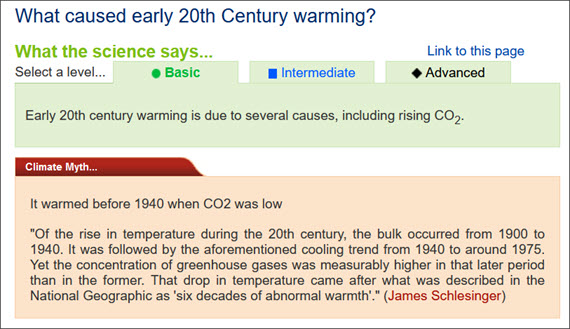
 The Medieval Warm Period was regional, not global.
The Medieval Warm Period was regional, not global.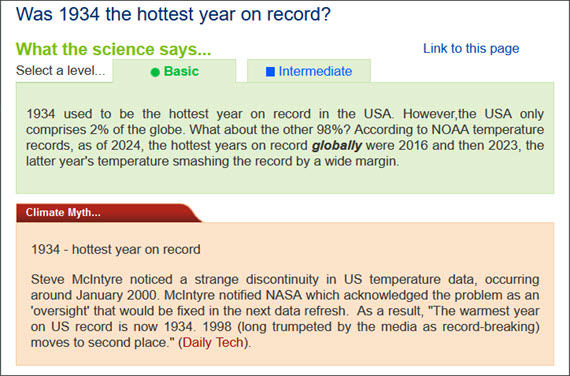
 Illustration by Samantha Harrington. Photo credits: Justin Lane-Pool/Getty Images, Win McNamee/Getty Images, European Space Agency.
Illustration by Samantha Harrington. Photo credits: Justin Lane-Pool/Getty Images, Win McNamee/Getty Images, European Space Agency.